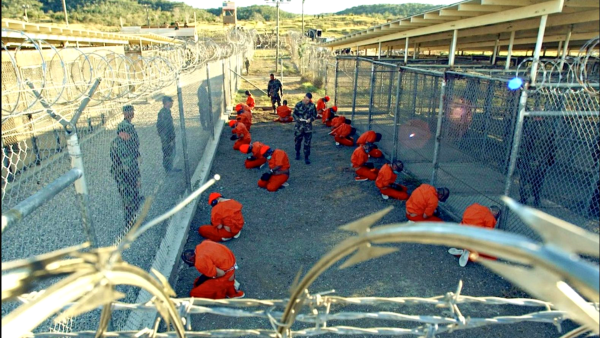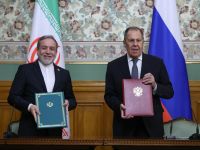Last Sunday, reporters at the New York Times used the Freedom of Information Act to obtain photos of the first arrivals at Guantanamo Bay back in 2001, where US military officers brought in hundreds of war captures from Afghanistan during the US's invasion, termed back then as "the war on terror".
Seeing these photos from Guantanamo, & remembering the Bush torture memos, the horrors of Abu Ghraib, & the rendition of prisoners to black sites for torture - how can we talk about human rights in other countries? We need accountability for these crimes. https://t.co/sbhBcNvquM
— James J. Zogby (@jjz1600) June 13, 2022
Even though the photos do not include any unexpected scenes, the newly released pictures have brought back questions about the notorious detention camp and whether or not it is still open.
Detentions in Guantanamo Bay have always triggered controversies over legality, not only because of its location on a Cuban territory under US control but also because most detainees were not trialed as per US laws, nor were international human rights organizations allowed to visit the facility.
This is Mullah Fazel Mohammad, he was detained for a 13 years in Guantanamo and is now deputy defense minister in Afghanistan. pic.twitter.com/E36sN15vSb
— Asaad Sam Hanna (@AsaadHannaa) June 13, 2022
After leaving Guantanamo Bay, many former prisoners reported systemic human rights violations committed by US officers amid the US wars in Afghanistan and Iraq.
Closing the Cuban-based Guantanamo Bay, where hundreds of detainees from the wars on Afghanistan and Iraq were held for years, was a significant promise made by the 44 President of United States Barack Obama during his election campaign in 2007 and 2008.
first official photos from guantanamo bay released by the pentagon
— ian bremmer (@ianbremmer) June 13, 2022
thanks to a freedom of information act request from the nyt pic.twitter.com/1jFwXlRAos
Only two days after making it to the White House in January 2009, Obama signed the 13492 executive order titled Review and Disposition of Individuals Detained at the Guantánamo Bay Naval Base and Closure of Detention Facilities. However, the detention camp remains open to this very day.
While the Obama eight-year term was able to lower the number of detainees in Guantanamo from 277 in 2008 to 91 in 2016, the detention camp is still open.
Secret Pentagon FTs of the 1st Prisoners at Guantánamo Bay; the #US twisted the Geneva Convention; a crew member snapped a souvenir FT on the flight & placed a US flag in the hand of blindfolded detainees between takeoff in Turkey & arrival at Guantánamo.https://t.co/XCV1iUyQrD pic.twitter.com/1BHelEtB4s
— Elijah J. Magnier ?? (@ejmalrai) June 15, 2022
As of April 2022, 37 men were reported to be in the detention camp where a total of 779 people were detained since January 2002.
Between 2002 and 2021, nine detainees passed away in Guantanamo Bay, raising questions over the causes and whether or not there were any suicide or homicide cases in the detention facility with little to no media access.
In August 2021, as the Taliban recaptured most of Afghanistan and announced its own government in the country, the world got to see the faces of many individuals who were previously held in Guantanamo, many of who had talked about being tortured while in the Cuban bay.
For 20 years, the U.S. military tightly controlled what the world saw of Guantánamo Bay detainees. Few explicit images of prisoners became public. Until now.
— The New York Times (@nytimes) June 12, 2022
The New York Times obtained photos from the secret Pentagon archive of the prison's first days. https://t.co/E3mOQXArSv
Among former Guantanamo detainees who returned to Afghanistan and re-enrolled in the Taliban is Mullah Fazel Mohammad who briefly served as the Afghan Deputy Defense Minister for less than a month in September 2021, only weeks after the group took control of the country.
Others are Mullah Noorullah Noori who is the current Minister of Borders and Tribal Affairs, the current Director of Intelligence in Afghanistan Abdul Haq Wasiq, the current Afghan Minister of Information and Culture Khairullah Said Wali Khairkhwa, and Mohammad Nabi Omari, the current Governor of Khost Province.
Most of these current Afghan officials had spent around 12 years in Guantanamo.







